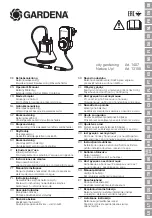
LN-9259-07.1
Test Stations - Safety
Fire Hazard
Improper or inadequate op-
eration and maintenance
procedures will cause a fire
hazard.
Protection against inadver-
tent arcing that is capable
of causing fire or explosion
is lost if any safey interlocks
are disabled during opera-
tion. Frequent power supply
shutdown indicates a problem
Fire extinguishing equipment must be present in
the spray area and tested periodically.
Spray areas must be kept clean to prevent the
accumulation of combustible residues.
Smoking must never be allowed in the spray
area.
The high voltage supplied to the atomizer must
be turned off prior to cleaning, flushing, or main-
tenance.
When using solvents for cleaning:
Those used for equipment flushing should have
flash points equal to or higher than those of the
coating material.
Those used for general cleaning must have flash
points above 100°F (37.8°C).
Spray booth ventilation must be kept at the rates
required by NFPA 33, OSHA, and local codes. In
addition, ventilation must be maintained during
cleaning operations using flammable or com-
bustible solvents.
Electrostatic arcing must be prevented.
Test only in areas free of combustible material.
Testing may require high voltage to be on, but
only as instructed.
Non-factory replacement parts or unauthorized
equipment modifications may cause fire or injury.
If used, the key switch bypass is intended for use
only during setup operations. Production should
never be done with safety interlocks disabled.
Never use equipment intended for use in wa-
terborne installations to spray solvent based
materials.
The paint process and equipment should be set
up and operated in accordance with NFPA-33,
NEC, and OSHA requirements.
Spray Area
AREA
Tells where hazards
may occur.
HAZARD
Tells what the hazard is.
SAFEGUARDS
Tells how to avoid the hazard.
3







































